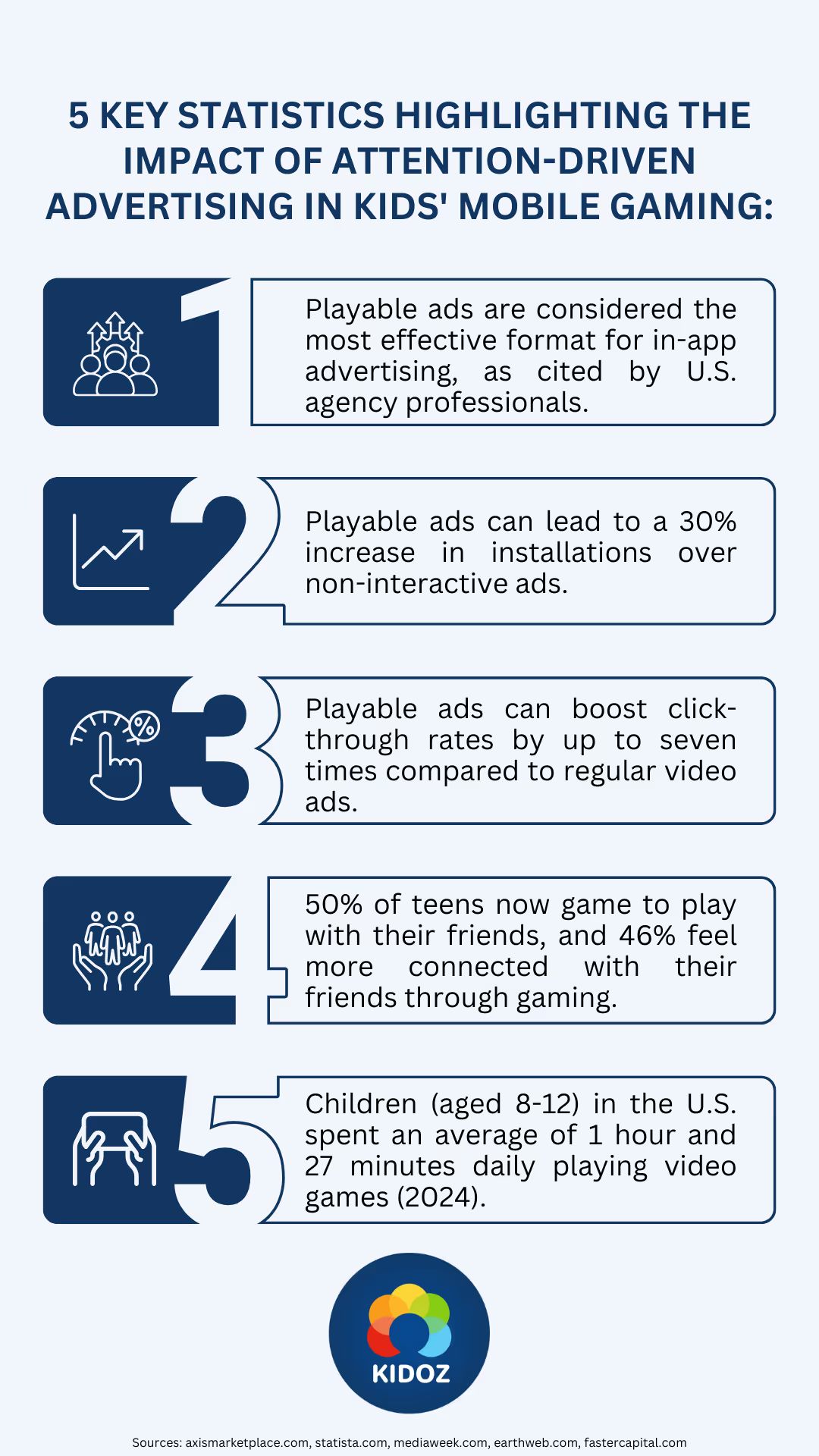
In digital advertising, traditional metrics like impressions, click-through rates, and video-completion rates have been marketing mainstays for years. But these metrics only reveal if an ad was seen, not whether it resonated. For today’s youngest digital consumers, attention is the real game-changer. The key question isn’t whether a brand message reaches kids, but whether it holds their attention long enough to leave a lasting impression.
Rethinking Metrics: Why Attention Beats Impressions
Traditional marketing success has long been measured by how many people see an ad. Metrics like reach and impressions tell us how far a campaign spreads but leave out a crucial element: how well it connects. An ad can hit millions of eyeballs and still fail if viewers tune out immediately. Enter attention metrics: designed to gauge not just whether an ad is seen, but how actively and meaningfully users engage with it. This deeper insight helps brands understand what drives lasting connections, particularly with Gen Alpha, the digitally native generation that’s rewriting the playbook for media engagement.
The Gaming Advantage: Attention in Action
Gaming environments are a perfect fit for attention-driven advertising. Unlike traditional ads that can be skipped or ignored, in-game ads require active participation. Playable ads, where users interact directly by tapping, swiping, or playing, create immersive brand experiences that stick. For example, over 70% of gamers aged 8-15 say they play video games most days or every day. This high level of engagement suggests that interactive in-game advertisements can effectively capture their attention, more so than traditional ad formats.. This isn’t however, just because kids spend more time gaming: it’s because the playable ad experience itself is built around interaction. Kids become active participants rather than passive viewers, making the brand experience more engaging and memorable.
The Power of Active Engagement
When kids actively engage with an ad, the impact is clear:
- Higher Brand Recall: Kids remember brands better when they’ve played with them rather than just watched them.
- Improved Brand Favorability: Interactive engagement leads to stronger positive feelings toward the brand.
- Increased Purchase Intent: Time spent interacting correlates with a higher likelihood of brand choice later on.
These metrics illustrate that attention is more than a buzzword: it’s a driving force behind marketing success.

Winning the Attention Economy
Attention economy is the name of the game in 2025, where content is limitless and time is scarce, capturing and holding attention is what sets brands apart. Playable ads succeed because they transform advertising from something to be endured into something to be enjoyed. For brands targeting Gen Alpha, this means thinking beyond reach and impressions. It’s about creating moments of fun, interaction, and discovery that become memorable brand experiences. Attention-based metrics go deeper, revealing not just whether an ad was seen, but how meaningfully it connected with its audience.
Call to Action: Setting New Industry Standards
The advertising industry has an opportunity to redefine what success looks like in kids’ media. By embracing attention-driven strategies and designing interactive, context-aware campaigns, brands can forge deeper, longer-lasting relationships with Gen Alpha. Kidoz is excited see the move beyond impressions and clicks to campaigns to something that truly resonates: one that capture attention, spark engagement, and leave a lasting impact.


